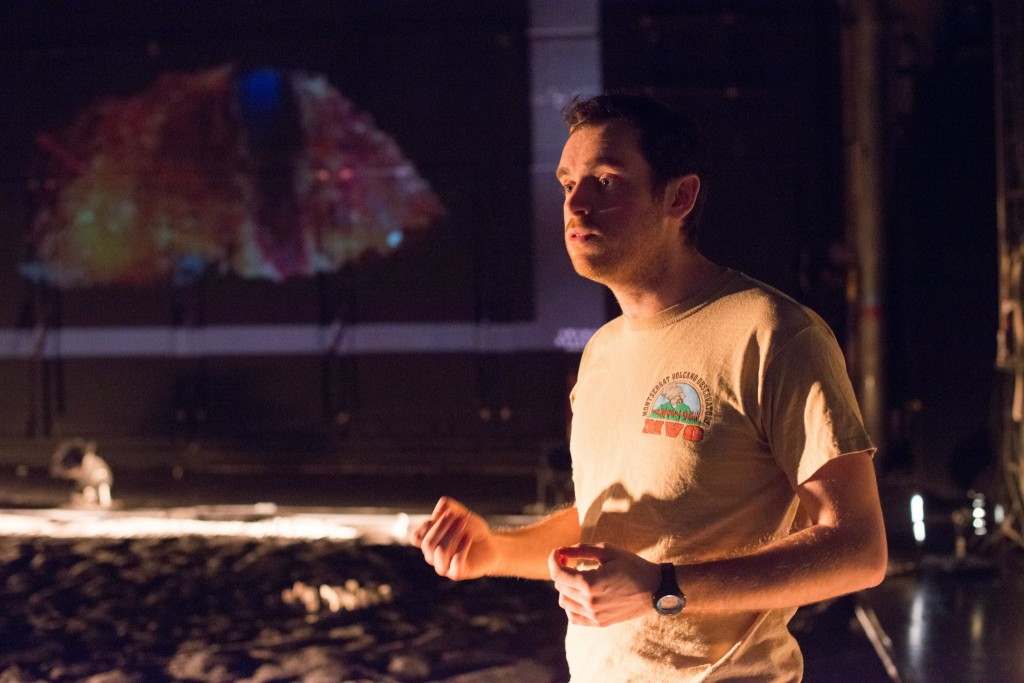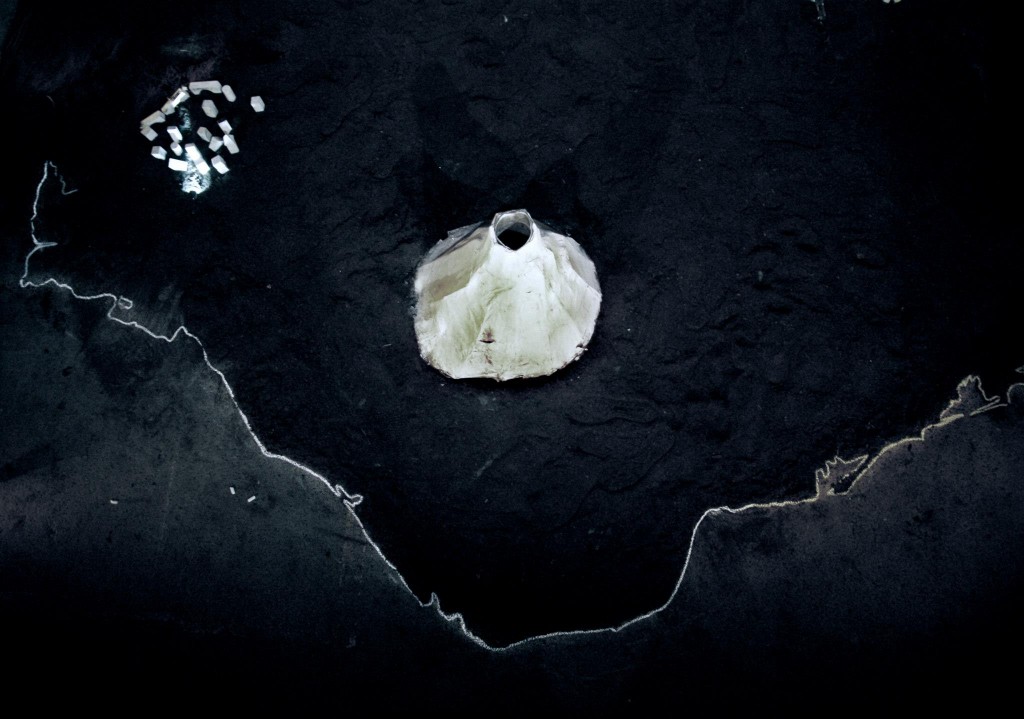Tony Blair and Gordon Brown, the England football team and trophies, UKIP and meteorology, are just some examples of things that don’t seem to work together, but I believe science and the arts do not belong in this category. Instead, the principles and practices used in these two dis ciplines, when mixed well, can benefit both the scientists and artists alike.
From an early age we have been taught to compartmentalise science and the arts and rarely have we witnessed a bit of poetry or music slipping into a Chemistry class or the acting out of the Carbon cycle in drama lessons (well not at my school anyway). As result of this scholastic upbringing, most of us divide science and the arts into two separate entities, myself included until fairly recently.
A few months ago I found myself at contemporary arts festival in Reims, France, sitting down to a fancy dinner next to the French Minister of Culture, whilst watching a band wail and scream alongside a silent documentary about the Inuit people, made in the 1920s. As surreal and enjoyable as this experience was, it made me question what; after eight years of geology training (mainly hammering rocks in the field and dissolving them in a lab); had led me to this?
Volcano theatre
Over the past year I have been working with a small professional theatre company (Clerke and Joy), who approached me whilst I was giving a public lecture about Volcanoes at the Bestival music festival. They were developing a show about a pilot getting stuck in the Eyjafjallajökull volcanic ash cloud in 2010, but wanted to add more volcanism to the proceedings (who can blame them!). After some volcano consulting via emails and skype correspondence, they asked me if I’d like to feature in their show, playing myself as a scientist. With very little knowledge about contemporary arts, I was sceptical and curious, but nonetheless I’ve always been willing to give new opportunities a shot. To aid the show I developed a visual-audio volcanology introductory lecture suitable for members of the public and conducted low-tech experiments to replicate the styles of eruption witnessed in the Eyjafjallajökull eruption. The show has now developed into an eclectic mix of comedy, volcanology facts, emotion and personified volcano caricatures.After the premier at the Brighton festival last May, ‘Volcano’ has now toured various theatres in the UK and even a French festival, and has enjoyed positive reviews and British Arts Council funding. Our next gig is at the Wales Millennium Centre in Cardiff on the 4th April.
Last week, we performed our show ‘Volcano’ as part of the Cambridge Science festival, along with the play ‘Journey round my skull’ as part of special evening of ‘making theatre with scientists’. Journey round my skull’ is a highly engaging and innovative show, which has benefited from consultation from neuro- and audio specialist Professor David McAlpine to make an amazing multi-sensory experience which you leave feeling both educated and entertained. This show clearly demonstrates how well theatre and science can work together, and how innovative and unique the results of such collaborations can be. After the show I was delighted to be part of a panel Q&A, along with Professor David McAlpine and our respective theatre collaborators, as we answered audience questions and discussed the theatre and science relationship and what impact this experience has had our own respective disciplines. The outcome of this discussion was really intriguing and has fuelled this article.
It’s all about the mix…
In reality, the arts and science are not too dissimilar from each other. Both use story-telling, and are designed to stimulate, inspire and be novel. Many scientists will have recognised that some of the best papers and presentations have a narrative linking their findings fluidly, whilst clearly stating the originality, significance and intrigue of their work with graphs, tables and images, leaving the reader educated, enthused and perhaps most importantly, entertained. Good art performances (such as theatre) also bring these elements together successfully and transparently on the stage, to change our perception about how we view different aspects of daily life.
However when science or the arts are left to their own devices, they can become very insular. Studies, shows or presentations may focus on small intricacies, which have limited significance to perhaps a few specialists in the field and generate no wider interest. This is especially problematic as the majority of the arts and science conducted in this country is government funded through tax payers, suggesting that perhaps we owe it to the public to make something that contributes to them and not just to our peers.
What my arts experience has done for me is to allow me to take a step back and reassess why I carry out my research in the first place. What importance and relevance does this have for people outside the field of volcanology? And crucially, how can I best communicate my science a more engaging and entertaining way? Working with artists has even helped me develop greater creativity, led me to question the basics which underpin our science and helped me to generate more well-rounded ideas for grant proposals.
The role of the arts in scientific communication
Public engagement is becoming an increasingly important part of scientific research, and rightly so. A common misconception about science is that it is wholly factual, whereas those of us working in the field know that this mostly is not the case. In fact, when you get into the nitty-gritty of most scientific research, there tends to be multiple theories, counter-intuitiveness and even subjectivity. The more the public and media journalists understand the degree of uncertainty within science, the better they can weigh up different pieces of evidence to present balanced and well-informed opinions. This is especially important in a field like Volcanology, which is often subject to speculation and exaggeration in the media (e.g Super volcanoes, to name just one!).
It’s our job as scientists to inform the public and get the record straight on important issues from climate change to tsunami hazards, as well as to inspire and enthuse society. Increased engagement has the potential to generate more public and government interest in science, and to encourage growth in the subject by stimulating the next generation of young scientists. Solely communicating through the normal scientific channels (such as conferences and papers) will only reach our fellow scientists, however interactions with the arts can provide a great and entertaining way of inspiring and informing those hard to reach audiences.
Other parts of the world already have thriving interactions between science and the arts. For instance, on a recent trip to Japan for a conference I visited several museums, in addition to the active volcanoes of Sakurajima, Aso and Unzen (of course!). The museums each had elaborate shows, often using animation, folklore and literature to convey information about historical volcanic disasters in a highly entertaining way. In Indonesia too, a country which is potentially the most at risk from volcanic hazards, the use of shadow puppets (so called Wayang stories) has been suggested as a possible way to increase the awareness of hazards in particular regions.
Back in the UK, we are lucky in geoscience to have a great ambassador in Iain Stewart. As well being a brilliant communicator, his shows combine science and the arts seamlessly, involving history, music, imagery and literature to produce captivating and educational TV shows. In volcanology too, there is a strong twitter presence, active blogging and a whole host of innovative schemes designed to capture the public’s’ attention, such as animation and story-telling (Oxford sparks), as well as the STREVA project, a large team of volcanologists who use interdisciplinary approaches to reduce the risk of volcanic hazards. As part of this project they have hosted volcano art workshops in Ecuador, and have put on their own volcanic theatre (Norfolk Volcano) involving music, literature readings and special effects to excite and delight. Look out for their next project: London Volcano at the National History Museum (9th– 13th June), which delves into the culture and history of a Caribbean volcanic island.
Ultimately it is schemes like the above that will enhance national interest in both science and the arts, and will help both disciplines to reach out to larger and more diverse audiences. The interaction between science and the arts can be highly mutually beneficial and a great way to exchange new and exciting techniques and methods. I believe that the effective employment of these complementary tools will lead to long-lived success of both of these disciplines and I look forward to seeing more exciting and innovative collaborations between science and the arts and increased public engagement as a result.
——————————————————————————————-
For more info about ‘Volcano’ and upcoming tour dates visit: http://www.clerkeandjoy.com/Volcano
Mike Cassidy is a post-doctoral researcher in volcanology, see his personal website for more information and you can follow him on twitter @mikevolc.

